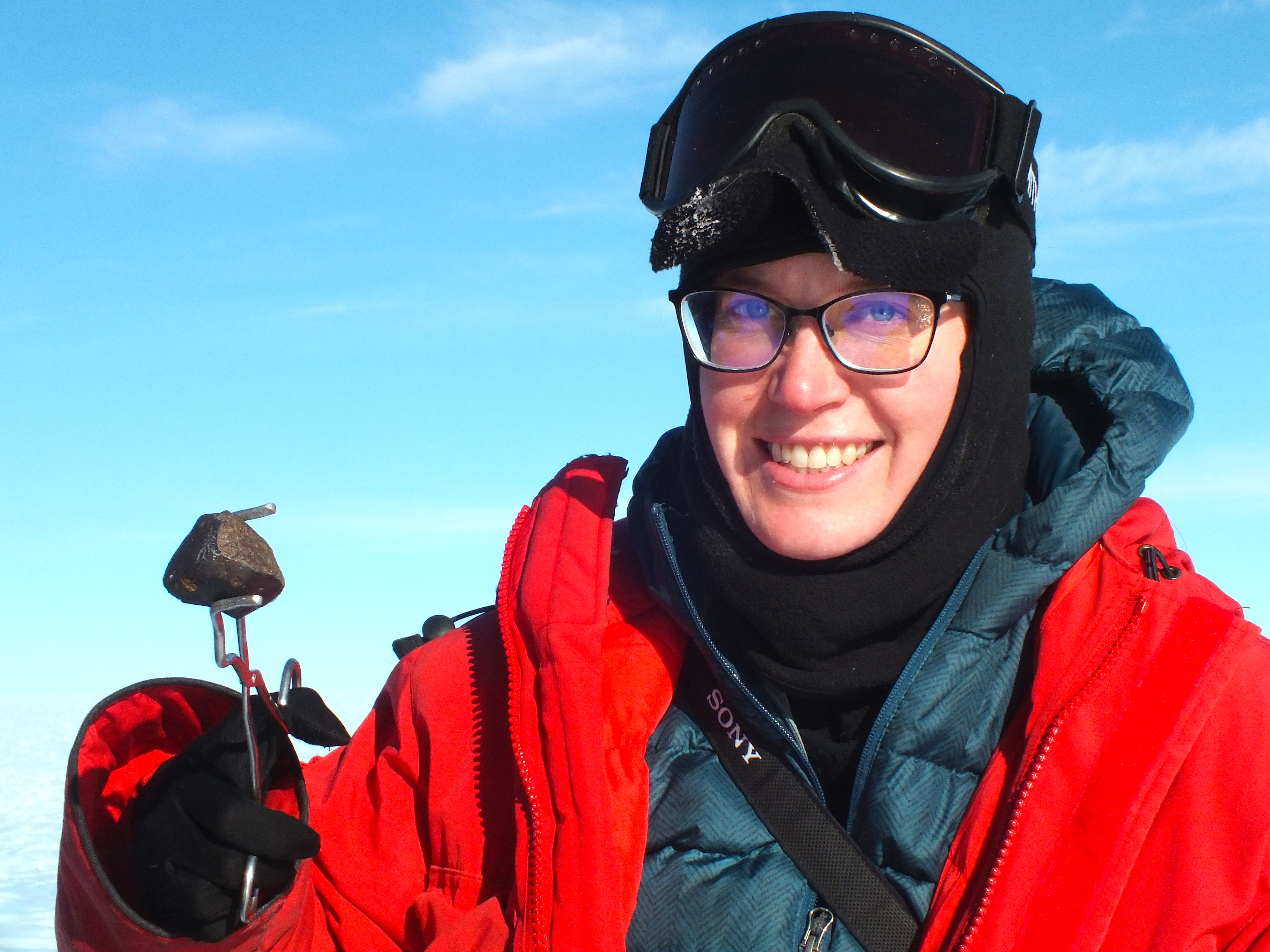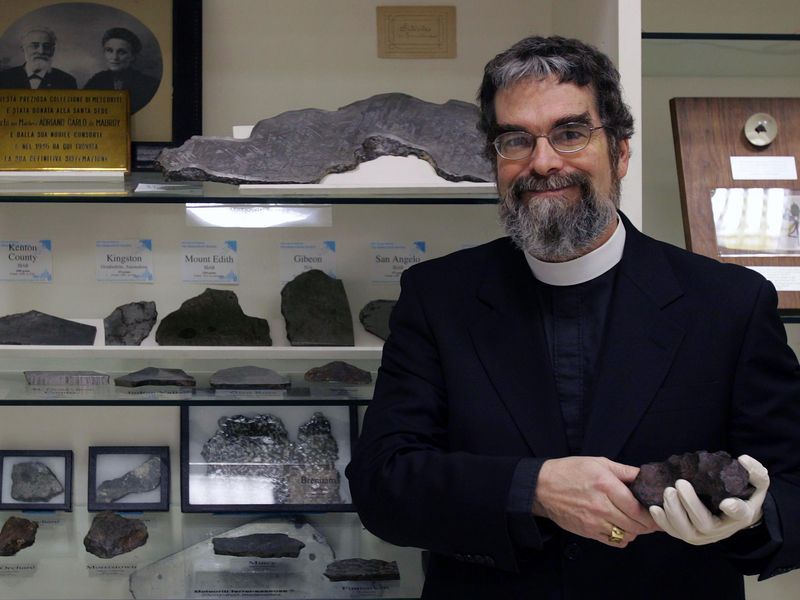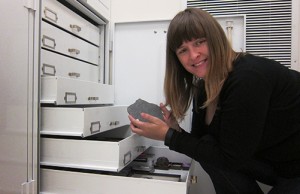Gallery Events
Jun
202021 |
Samuel Courville; School of Earth and Space Exploration, Arizona State UniversityOf Magnets and Meteorites: What Magnetized Meteorites Tell Us About the Formation of Asteroids and the Solar SystemLocation: https://ucla.zoom.us/meeting/register/tJEqduyupj0vGd3S0_52FsbHTbPjYr0sZQUj Like the magnets on your refrigerator, some meteorites are magnetic. These meteorites are known to have been magnetized in strong magnetic fields before they crashed down onto Earth’s surface. It is important to understand how meteorites become magnetized and what magnetized meteorites tell us about the history of the solar system. Iron meteorites and chondrites that have been magnetized likely acquired their magnetization on their parent asteroids. There are at least three ways that an asteroid could acquire magnetization, and each implies a different formation history for the asteroid: (1) An asteroid could generate its own internal magnetic field and magnetize itself. (2) An external magnetic field could magnetize an asteroid. (3) An asteroid could become magnetized by the accretion of previously magnetized grains. Each mechanism requires different asteroid formation times and different degrees of thermal evolution. Despite the presence of magnetic meteorites, no asteroids have been robustly confirmed to be magnetic. 
|
May
162021 |
Dr. Emilie Dunham; UCLAMeteorites on Ice: Collecting and Studying Antarctic MeteoritesLocation: https://ucla.zoom.us/meeting/register/tJEqduyupj0vGd3S0_52FsbHTbPjYr0sZQUj Although meteorites are found all over the world, Antarctica is a prime searching location. Over the past 40 years, nearly 25,000 meteorites have been collected across this cold desert. I was a member of the 2019-2020 ANtarctic Search for METeorites (ANSMET) team and helped to collect 346 meteorites. I learned about the history of meteorite hunting in Antarctica, how to find meteorites, and how to survive a month living in a tent hundreds of miles from the nearest people. ANSMET has contributed significantly to meteorite collections. Amazing discoveries have been made about the formation and evolution of the Solar System formation through the study of Antarctic meteorites. Join me on a virtual journey to Antarctica! Image Credit: Antarctic Search for Meteorites Program, Case Western Reserve University 
|
May
152021 |
UCLA Meteorite Gallery Poetry ContestCelebrate National Poetry Day in space!Location: Virtual Contest
In celebration of National Poetry month, we invite all enthusiasts to submit up to 3 poems about meteorites, asteroids, or impacts. We welcome all poetic forms such as haikus, sonnets, limericks, free verses, etc. After careful review of all submissions, we will publish the top 10 poems here on our website and the top 3 poems will be posted in the UCLA Meteorite Gallery. Please submit all poems to Juliet Hook at jahook@ucla.edu by May 15th, 2021. We kick off this contest with an introductory poem by our curator Dr. Alan Rubin.
Waltzing 253 MathildeDr. Alan Rubin
Crushed and cratered, shattered, pelted,
A Star in a StoneboatRobert Frost
Never tell me that not one star of all
Some laborer found one faded and stone-cold,
He noticed nothing in it to remark.
He did not recognize in that smooth coal
He did not see how like a flying thing
And a long Bird of Paradise's tail
Nor know that be might move it from the spot—
And burning to yield flowers instead of grain,
He moved it roughly with an iron bar,
Such as even poets would admit perforce
He dragged it through the plowed ground at a pace
It went for building stone, and I, as though
Yet ask where else it could have gone as well,
From following walls I never lift my eye,
Some may know what they seek in school and church,
Sure that though not a star of death and birth,
Though not, I say, a star of death and sin,
To chafe and shuffle in my calloused palm
Such as it is, it promises the prize
The MeteoriteClive Staples Lewis
Among the hills a meteorite
Thus easily can Earth digest
Nor is it strange these wanderers
All that is Earth has once been sky;
Hence, if belated drops yet fall |
Apr
182021 |
Dr. Guy Consolmagno, S.J.; Vatican ObservatoryVesta and the Chaotic Formation of PlanetsLocation: https://ucla.zoom.us/meeting/register/tJEqduyupj0vGd3S0_52FsbHTbPjYr0sZQUj The Dawn mission was sent to Vesta to inspect, close up, an intact protoplanet from the origin of the solar system. After all, its spectra matches that of basaltic meteorites, which must have come from an early, chemically evolved protoplanet. Except... Vesta's overall density is too low, and its core and crust too big, to fit anything like what we expect an intact protoplanet to look like. Was Vesta ripped apart and re-assembled? Is Vesta giving us new clues to planet formation and evolution in a violent early solar system? 
|
Mar
212021 |
Dr. Rhiannon Mayne; TCUCharmed, I'm sure: Meteorites as Objects of Cultural ImportanceLocation: https://ucla.zoom.us/meeting/register/tJEqduyupj0vGd3S0_52FsbHTbPjYr0sZQUj Meteorites are objects usually prized primarily for their scientific value; for example, they help answer questions about the formation of our Solar System. However, there is also a long history of meteorites also being objects of significant cultural importance. Qarabawi’s Camel Charm is a sample acquired by the National Meteorite Collection at the Smithsonian’s National Museum of Natural History in 1974. The Charm consists of a flattened disk about 6.5 cm in diameter and four links, all of which are made from meteoritic material. In this presentation, I will discuss the combined scientific and ethnographic study of the Camel Charm, and the Wadi El Gamal meteorite from which it was made. 
|